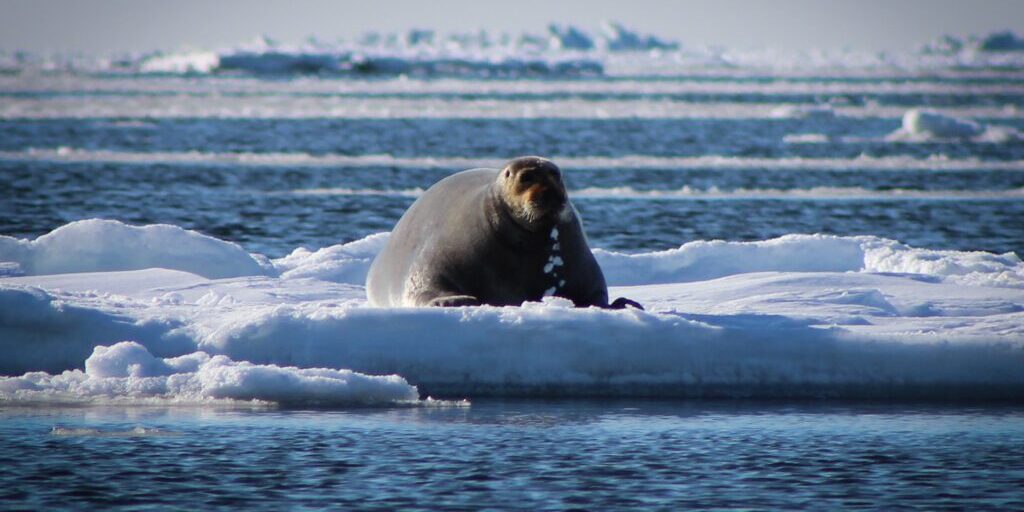An abandoned and starving bearded seal pup is making her way towards good health thanks to a group of Shaktoolik students.
The group of students from the Western coastal village kept the pup safe from curious pets and harassment until the Alaska SeaLife Center was able to take her on April 13. She was discovered alone on the beach only a few days earlier, and during that time, several residents called to alert NOAA and The SeaLife Center. Village Police Officer Jeffrey Paniptchuk caught the pup, secured her into a kennel, and then sent her to Seward on Ravn Air.
According to a memo from the SeaLife, she was about a week old upon captivity. Almost one month later, Chloe Rossman, the Communications Coordinator for SeaLife, is “cautiously optimistic”:
“We’re now seeing a more rounded seal shape. When you think of a seal, you think of a very round, blubbery animal, and she came in as kind of a peanut shape. You don’t really want to see the neck on a seal; that’s indicating that they’re really underweight.”
Rossman says there could be many reasons a mother and pup could be separated, and there is no way of knowing in this case. The mother could have been killed by a predator, or sometimes, new mothers simply abandon their pups.
The AlaskaSea Life Center in Seward very rarely gets bearded seals; staff say their last bearded seal rescue was 2002. As such, the Wildlife Response Program has to formulate a special diet for her using elements of walrus, harbor seal, and fish gruel formulas. Now, she is starting to eat whole herrings, too. She is slowly learning to swim, though her underweight body has difficulty regulating itself in cold water.
Since the bearded seal is harvested by subsistence hunters, NOAA is unlikely to have her released to the wild.
“When we bring a seal into the center to treat them we are going to be giving them various vitamins, and injections and antibiotics, to help their immune system and what-not. So now that we stepped in to try to help this animal, we could be altering somebody’s potential food source after that.”
Rescued animals aren’t typically given a name until after their thirty-day quarantine is over. At that time, the seal will be moved to a bigger pool, where her progress will continue to be monitored.
Image at top: file photo: A bearded seal, or ugruk, on the sea ice. Photo Credit: Kawerak Subsistence Program, used with permission.




